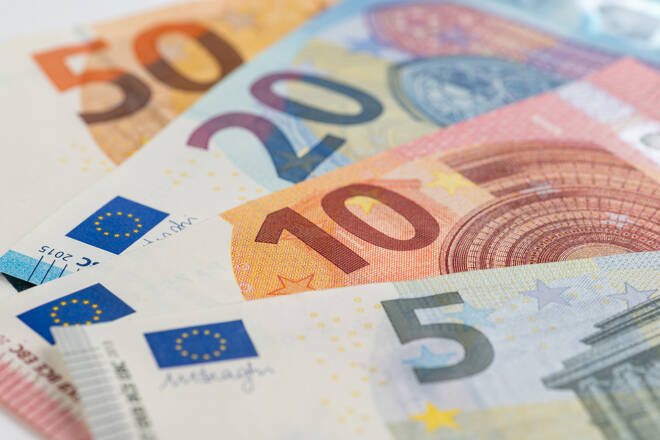EUR/USD is Under Pressure After Strong US GDP
Published: Jan 26, 2024, 10:12 GMT+00:00
The publication of the US GDP growth rate for Q4, 2023, has shown a significant increase compared to forecasts.
Consumer Confidence and GDP Surpass Expectations
With a projected growth of around 2%, the published number was 3.3%. Consumer spending, and overall consumer confidence had grown thanks to cooling inflation.
For the whole year of 2023, GDP for the United States had grown to around 2.5%.
With high numbers of consumer spending, change in the PCE index had not exceeded 2%, which fits the target of the Federal Reserve.
Strong economic figures had trimmed the probability of interest rate decline in March. According to the Fedwatchtool from CME, almost 60% of traders are convinced that the interest rate won’t go down in March, which helps hold yields of 30-year treasury bonds above 4.3%.
The displayed numbers go against the expectations of many analysts, who have been expecting the economy to go down to recession, which doesn’t look like a realistic scenario for now, strengthening the “soft landing” narrative again.
That holds the US dollar steady and pushes down Gold, EURUSD, and other assets related to the US dollar.
However, the strength of the US dollar might be temporary, as markets seem to not perceive tight monetary policy as an option for 2024. The question now is how fast the decline of interest rates would take place.
According to the Fedwatchtool from CME, more than 50% of traders have confidence in a 2-step decline of the interest rate until June, which is lower than expected. For the year-end, the market is discounting a possible 4 – 4.25 level for the interest rate, so the US dollar still might be under pressure in the long-term perspective.
EUR/USD
The dynamics of EURUSD now is influenced by the short-term strength of the US dollar, and probably that puts EURUSD in the context of a declining trend. The price moves in the shape of a declining wedge, and for the moment of writing this report, is positioned at the lower side of this formation, which might lead to a retest of the upper trendline with a possible further decline.
About the Author
Stanislav Bernukhovcontributor
Stanislav became involved in the financial markets in 2004. By 2008, he developed into a full-time individual trader, trading futures and options on the Chicago Mercantile Exchange.
Advertisement
